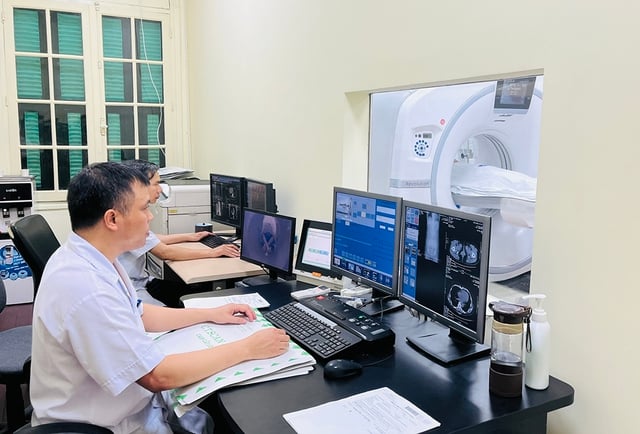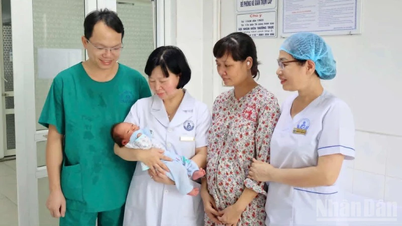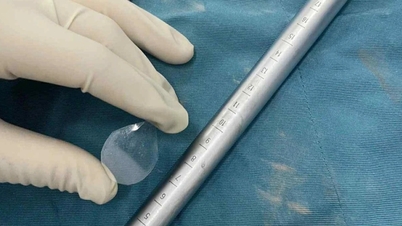This hospital is currently overloaded with medical examination and treatment; patients have to wait for a long time, affecting their time and health. In recent years, the Government and the Ministry of Health have always prioritized allocating many resources to invest in upgrading and expanding the scale, area and number of hospital beds of the hospital. Capital sources have been mobilized from a variety of sources, including: central budget, government bonds, increasing revenue and saving annual state budget expenditure; ODA capital as well as capital for developing the hospital's career activities. In particular, the government is currently prioritizing the implementation of the project to build Cho Ray Vietnam - Japan Friendship Hospital (facility 2) using ODA capital from the Japanese government, with a scale of 1,000 beds. This project will be implemented in the period of 2025 - 2030, contributing to improving medical examination and treatment capacity and reducing hospital overload.
Expanding satellite hospitals, cutting down on procedures
The Ministry of Health also assessed that the overload situation at upper-level hospitals is still common, causing patients to have to wait for a long time, affecting the quality of treatment; the difference in medical examination and treatment conditions between levels, especially at the grassroots level, is still quite large due to limitations in human resources, equipment and specialized techniques. In addition, administrative procedures in health insurance examination and treatment are still complicated, causing difficulties for people, especially the elderly, the seriously ill or in remote areas.
Regarding general solutions to reduce the overload at central hospitals, the Ministry of Health will continue to implement synchronous solutions to increase investment and develop the grassroots health system, and improve medical examination and treatment capacity. In particular, expanding the satellite hospital project, encouraging provincial hospitals and qualified private hospitals to participate as "nuclear hospitals"; promoting the application of information technology and telemedicine for consultation, counseling and treatment.

More techniques and specialties will be transferred to satellite hospitals in the coming years.
PHOTO: LIEN CHAU
Regarding the expansion of satellite hospitals, according to the Department of Medical Examination and Treatment Management (Ministry of Health), in the period of 2025-2030, the goal is to have 200 satellite hospitals nationwide by 2030; reducing the rate of patients having to be transferred to other hospitals by 5%. Accordingly, satellite hospitals will receive technical transfer from nuclear hospitals with more specialties, prioritizing investment in specialties and fields with high demand for medical examination and treatment, such as: cardiovascular, surgery, obstetrics, pediatrics, infectious diseases, oncology, hematology and blood transfusion, emergency resuscitation, respiratory, urology, neurology, endocrinology, dermatology, maxillofacial surgery... and support to improve quality management.
The new satellite hospital project will have a regional nuclear hospital, which is a hospital with specialties and fields developed in the region, and is assigned to coordinate with the national nuclear hospital to build and develop a network of satellite hospitals in the region (in which, the national nuclear hospital is the hospital with the most developed specialties and fields nationwide, performing the most advanced techniques in the list or leading in the field, and is assigned to build and develop a network of satellite hospitals nationwide according to professional capacity). At the same time, the Ministry of Health will implement policies to attract and encourage young doctors to volunteer to work in remote, isolated, and disadvantaged areas, contributing to improving the capacity of lower-level health care.
In previous years, the implementation of the project to reduce hospital overload in the period 2013 - 2020; the satellite hospital project; the policy of rotating upper-level medical staff to support lower-level hospitals has helped reduce the bed capacity at central-level hospitals; helping reduce the number of referrals. The number of hospitals increased from 1,415 (in 2014) to 1,643 (in 2023); the number of actual hospital beds increased by more than 41% (from 288,496 beds in 2014 to 409,244 beds in 2022).
In addition, to reduce procedures and travel time, hospitals are reforming administrative procedures in health insurance examination and treatment such as: implementing electronic medical records; prescribing outpatient treatment with health insurance for up to 3 months of medicine for chronic patients who meet health requirements.
Source: https://thanhnien.vn/mo-rong-benh-vien-cho-ray-them-cac-giai-phap-giam-tai-tuyen-tu-185251001172124758.htm



![[Photo] Keep your warehouse safe in all situations](https://vphoto.vietnam.vn/thumb/1200x675/vietnam/resource/IMAGE/2025/10/1/3eb4eceafe68497989865e7faa4e4d0e)
![[Photo] President of the Cuban National Assembly visits President Ho Chi Minh's Mausoleum](https://vphoto.vietnam.vn/thumb/1200x675/vietnam/resource/IMAGE/2025/10/1/39f1142310fc4dae9e3de4fcc9ac2ed0)

![[Photo] Hanoi morning of October 1: Prolonged flooding, people wade to work](https://vphoto.vietnam.vn/thumb/1200x675/vietnam/resource/IMAGE/2025/10/1/189be28938e3493fa26b2938efa2059e)
























































































Comment (0)